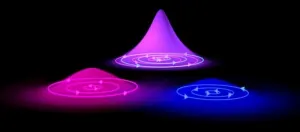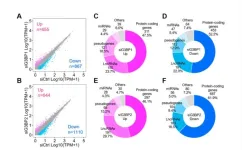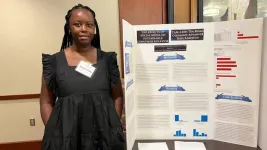(Press-News.org) HOUSTON – (June 1, 2023) – A new investigation led by researchers at Baylor College of Medicine’s Human Genome Sequencing Center, the Institute of Evolutionary Biology and Pompeu Fabra University in Barcelona, Spain, and Illumina, Inc. analyzed the genomes of 233 nonhuman primate species and revealed key features of primate evolution, human disease and biodiversity conservation. The findings are published in a series of studies in a special issue of the journal Science.
The Primate Genome Project generated the most complete catalog of genomic information for primates to date, covering nearly half of all existing primate species on Earth. Researchers from 24 countries compared the genomes of 809 individual primates from 233 species and identified 4.3 million common missense mutations. The resulting studies uncovered DNA sequence variants and developed phylogenies for primate species that will provide new data on primate and human evolution, as well as primate biodiversity. In addition, researchers used primate genomic data to identify new insights into the genetic causes of human disease and developed an algorithm that will help predict pathogenic variants in humans.
“The simultaneous publication of this broad array of papers on primate genomics demonstrates the value and the power of comparative genetics,” said Dr. Jeffrey Rogers, lead investigator and associate professor at the Human Genome Sequencing Center at Baylor. “When we investigate the genomics of nonhuman primates, we not only learn about these species, which is important and timely, but we can also place human genetics into its proper comparative context, which provides new insights into human health and human evolution.”
“Primates have a great genetic diversity that increases between the different geographical regions and taxonomies,” said Dr. Tomàs Marquès-Bonet, lead investigator from Pompeu Fabra. “The study of this diversity is crucial for human evolutionary studies, human disease and for their future conservation.”
“Our studies show which species are in most dire need of conservation efforts and can help identify the most effective strategies for preserving these species,” said Dr. Lukas Kuderna, lead investigator from the Institute of Evolutionary Biology.
Interspecies gene flow in baboons may shed light on human evolution
One of the consortium studies focused on hybridization of genetically distinct lineages in baboons. Researchers used whole genome sequence data from 225 baboons representing multiple populations to identify several new geographic sites of gene flow between populations. They found that yellow baboons (P. cynocephalus) from western Tanzania are the first nonhuman primate shown to have received genetic input from three distinct lineages. The evolutionary dynamics of baboon populations suggest that other early hominins may display similar complexity.
“These results suggest that the population genetic structure and history of introgression among baboon lineages is more complex than was previously thought, and that shows that the baboons are a good model for the evolution of humans, Neanderthals and Denisovans,” Rogers said.
Using primate mutations to predict risk of human disease
One of the consortium studies with key implications for human disease focused on determining clinical relevance of genetic variants. Out of the 4.3 million missense mutations identified in primates in this study, researchers found that 6% can be considered likely benign in human disease because their abundant frequency in primate populations does not appear to have a negative effect. Meanwhile, in the other 94%, researchers used the PrimateAI-3D deep learning algorithm, an artificial intelligence algorithm developed by the team at Illumina, to predict variant pathogenicity in human disease.
“We discovered that if a ‘rare’ mutation cannot be found in the primate genome, it is very likely to cause a human disease,” said Dr. Kyle Farh, lead investigator from Illumina. “In addition, some of these rare mutations can cause, by themselves, some diseases considered polygenic.”
The new genomic catalog outlined in this series of studies has halved the number of genomic innovations that were believed to be exclusively human. This observation facilitates the identification of those mutations not shared with primates that consequently may be unique to human evolution and the characteristics that make us human.
“These studies bring comparative genomics to new heights, and we can predict the impact on both understanding of human biology and on practical clinical diagnostic issues,” said Dr. Richard Gibbs, founding director of the Human Genome Sequencing Center and Wofford Cain Chair and Professor of Molecular and Human Genetics at Baylor.
Other Baylor contributors to this work include R. Alan Harris, Muthuswamy Raveendran, Marie-Claude Gingras, Sejal Salvi and Harshavardhan Doddapaneni. For a full list of authors and funding for this work, see the publications.
# # #
END
Major primate genome sequencing studies reveal new insight into evolution, biodiversity and key applications for human health
2023-06-01
ELSE PRESS RELEASES FROM THIS DATE:
Tiny quantum electronic vortexes can circulate in superconductors in ways not seen before
2023-06-01
Within superconductors little tornadoes of electrons, known as quantum vortices, can occur which have important implications in superconducting applications such as quantum sensors. Now a new kind of superconducting vortex has been found, an international team of researchers reports.
Egor Babaev, professor at KTH Royal Institute of Technology in Stockholm, says the study revises the prevailing understanding of how electronic flow can occur in superconductors, based on work about quantum vortices that was recognized in the 2003 Nobel Prize award. The ...
University of Miami selected to prestigious Association of American Universities
2023-06-01
The University of Miami has been chosen as one of the newest members of the esteemed Association of American Universities (AAU), a distinguished national organization of leading research universities founded in 1900.
The invitation to join the prestigious organization—considered the gold standard in American higher education—comes as the University’s research and sponsored program expenditures totaled more than $413 million in fiscal year 2022, demonstrating a critical focus to address the world’s most complex issues.
“There are special moments in the life of a university that not only reward our hard work but, more importantly, ...
Dr. Robert Harrington named dean of Weill Cornell Medicine
2023-06-01
Dr. Robert A. Harrington, a cardiologist and the Arthur L. Bloomfield Professor of Medicine and chair of the Department of Medicine at Stanford University, has been named the Stephen and Suzanne Weiss Dean of Weill Cornell Medicine and provost for medical affairs of Cornell University.
The appointment was approved by the Cornell Board of Trustees and the Weill Cornell Medicine Board of Fellows. Harrington - also a member of the National Academy of Medicine - will begin his new position on Sept. 12.
A past president of the American Heart Association (AHA), ...
Early career scientist wins prestigious Hungarian physics award
2023-06-01
Laszlo Horvath, an early career physicist at the U.S. Department of Energy’s (DOE) Princeton Plasma Physics Laboratory (PPPL) stationed at General Atomics in San Diego, is the winner of the 2022 Károly Simonyi Memorial Plaque from the Hungarian Nuclear Society. Established in 2007, the plaque “recognizes Hungarian researchers and engineers with outstanding achievements in the field of fusion plasma physics and technology.”
Horvath learned he had won the Simonyi Memorial Plaque not long ...
More evidence needed to confirm promise of remote or decentralized trials
2023-06-01
There’s one question that Hollings Cancer Center researcher Jennifer Dahne, Ph.D., co-director of the remote and virtual trials program at the South Carolina Clinical & Translational Research Institute, hears more than any other as she consults with clinical researchers about how to set up remote trials, also known as decentralized trials. Will these trials overcome the barriers that make it difficult for minority and underserved populations to participate in clinical trials? It’s also a question she often discusses ...
Forest birds with short, round wings more sensitive to habitat fragmentation, OSU study shows
2023-06-01
CORVALLIS, Ore. – Tropical forest birds, which tend to have wings that are short and round relative to their body length and shape, are more sensitive to habitat fragmentation than the long-, slender-winged species common in temperate forests, according to an international collaboration that included scientists from Oregon State University.
OSU’s Matt Betts and Christopher Wolf teamed with 14 other authors to analyze the wings of more than 1,000 species worldwide in a study led by Thomas Weeks of Imperial College London and ...
Astrophysicists confirm the faintest galaxy ever seen in the early universe
2023-06-01
Key takeaways
After the Big Bang, the universe expanded and cooled sufficiently for hydrogen atoms to form. In the absence of light from the first stars and galaxies, the universe entered a period known as the cosmic dark ages.
The first stars and galaxies appeared several hundred million years later and began burning away the hydrogen fog left over from the Big Bang, rendering the universe transparent, like it is today.
Researchers led by astrophysicists from UCLA confirmed the existence of a distant, faint galaxy ...
Stress granules control Alzheimer's gene transcripts and neuronal proteostasis
2023-06-01
“Determining the mechanism underlying RNA sequestration in [stress granules] [...] could represent a key goal in the discovery and development of suitable [Alzheimer’s disease] biomarkers and therapies.”
BUFFALO, NY- June 1, 2023 – A new research paper was published on the cover of Aging (listed by MEDLINE/PubMed as "Aging (Albany NY)" and "Aging-US" by Web of Science) Volume 15, Issue 10, entitled, “Stress granules sequester Alzheimer’s disease-associated gene transcripts and regulate disease-related neuronal proteostasis.”
Environmental and physiological stresses ...
MU textiles professor earns grant as part of USDA’s Higher Education Challenge
2023-06-01
When you think about big data and fashion, it seems unlikely that the two might be stitched together. However, the modern fashion industry depends on data analytics throughout the supply chain to serve customers in ways that champion innovation, including expanding designers’ creativity, calculating the environmental impact of making a product and keeping brands up to date on changes in the market.
In an inventive project funded by a Department of Agriculture (USDA) grant of $149,000 awarded to Li Zhao, a professor of textiles and apparel management in the University of Missouri’s College of Arts and Science, students will ...
Deep-brain stimulation during sleep strengthens memory
2023-06-01
While it’s known that sleep plays a crucial role in strengthening memory, scientists are still trying to decode how this process plays out in the brain overnight.
New research led by scientists at UCLA Health and Tel Aviv University provides the first physiological evidence from inside the human brain supporting the dominant scientific theory on how the brain consolidates memory during sleep. Further, the researchers found that targeted deep-brain stimulation during a critical time in the sleep cycle appeared to improve memory consolidation.
The research, published June 1 in Nature Neuroscience, ...







